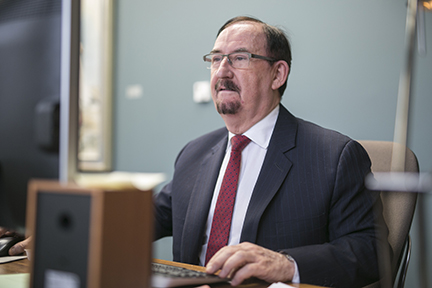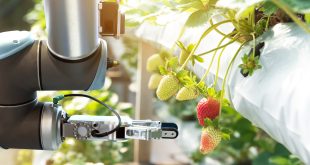Text by Lekha Kanagasabai
Maurice Moloney has been involved with the plant agriculture and biotech industry for almost 30 years. A renowned food and agriculture scientist, Moloney was appointed Executive Director and CEO of the Global Institute for Food Security (GIFS) in 2014, a public-private partnership substantially funded by Potash Corporation and the province of Saskatchewan.
A largely pressing issue, food security deals with the availability of sufficient, nutritious food of quality that is socially acceptable to a consumer, which, Moloney specifies, takes into account various restrictions such as religion. With more than one billion people significantly malnourished, GIFS focuses on the science and policy affecting global food security, with the institute based in Canada’s very own breadbasket, Saskatchewan. Moloney says GIFS handles food security on both a local and global perspective.
“Saskatchewan plays a very significant role in global food security. If one were to imagine that a wheat disease spread through Saskatchewan and knocked out wheat crops, we’d see an effect, not only locally, but globally.”
 The reality is that malnutrition has been the leading cause of death in a number of countries around the world. In 2010, the United Nations reported 925 million undernourished people, a number largely made up of areas in Asia, the Pacific, and Sub-Saharan Africa respectively. GIFS looks into these issues and their causes – with the primary focus revolving around seed development, soil development, and digital agriculture. Scientists and researchers are looking into developing crops that are low maintenance and have the ability to protect themselves from environmental effects such as insects and disease.
The reality is that malnutrition has been the leading cause of death in a number of countries around the world. In 2010, the United Nations reported 925 million undernourished people, a number largely made up of areas in Asia, the Pacific, and Sub-Saharan Africa respectively. GIFS looks into these issues and their causes – with the primary focus revolving around seed development, soil development, and digital agriculture. Scientists and researchers are looking into developing crops that are low maintenance and have the ability to protect themselves from environmental effects such as insects and disease.
“There’s a big opportunity there to increase yield in cooperation with hybrid vigour in the seed,” Moloney says adding such technologies would vastly improve economies in both the developed and developing world.
Soil development also plays a large part in increasing production of crops. Moloney says that given the ability to increase organic matter in soil, it would also retain more moisture and nutrients to eventually produce more fertile soil.
Digital agriculture deals with the intercept between information technology and agriculture in all its different forms. In the developed world, farms will become monitored and wired, allowing farmers to understand everything about their fields. From moisture content to nutrient status to PH levels, there are a number of factors that could be monitored to aid in the early detection of soil-borne diseases.
Moloney plans on developing his newest endeavour into a functioning institute with members and its own research programs. He says GIFS is currently in the process of hiring internationally renowned talent and hopes to expand what is now a skeleton staff to a team of more than 50 people by this time next year.
 Canadian Food Business
Canadian Food Business




